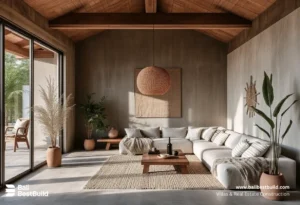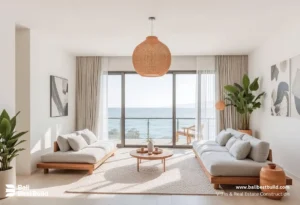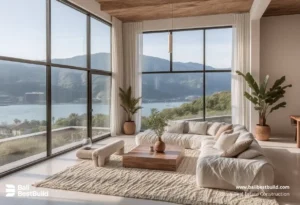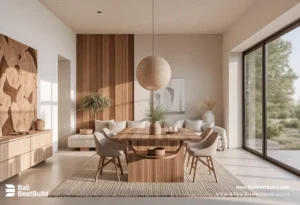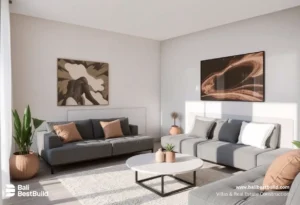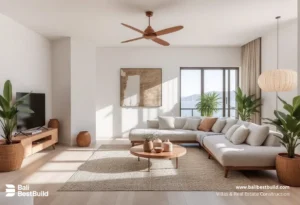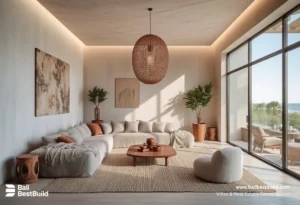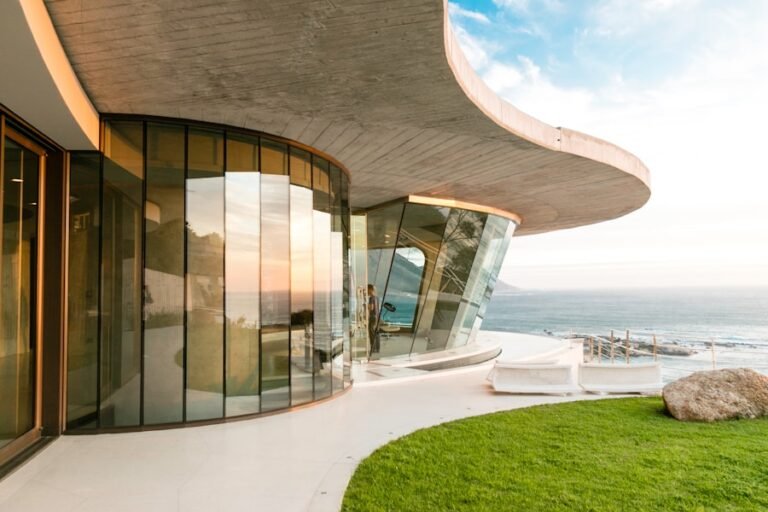Bali, known for its stunning natural beauty and rich cultural heritage, has seen a rise in the popularity of tiny living in recent years. The concept of living in compact homes has gained traction among both locals and expats, as people seek to simplify their lives and reduce their environmental footprint. The trend has been fueled by a growing awareness of the impact of overconsumption and a desire to live more sustainably. As a result, tiny homes, which are typically less than 500 square feet in size, have become a popular housing option in Bali, offering a more affordable and eco-friendly alternative to traditional homes.
The appeal of tiny living in Bali lies in its ability to provide a simpler, more intentional way of life. By downsizing their living spaces, residents are able to reduce their environmental impact and live more sustainably. Additionally, tiny homes are often more affordable than larger homes, making them an attractive option for those looking to live in Bali on a budget. As a result, the tiny living movement has gained momentum in Bali, with an increasing number of people choosing to embrace a minimalist lifestyle in compact homes.
Embracing Minimalism and Sustainability in Compact Homes
The rise of tiny living in Bali has been driven by a growing interest in minimalism and sustainability. Many people are drawn to the idea of living with less, and tiny homes offer an opportunity to do just that. By embracing minimalism, residents are able to declutter their lives and focus on what truly matters to them. This shift towards a more intentional way of living has also led to a greater emphasis on sustainability, with many tiny home owners incorporating eco-friendly features into their homes, such as solar panels, rainwater harvesting systems, and composting toilets.
In addition to the environmental benefits, tiny homes also offer financial advantages. With lower construction and maintenance costs, as well as reduced energy consumption, tiny home owners can save money while living more sustainably. This has made tiny living an appealing option for those looking to reduce their ecological footprint without breaking the bank. As a result, the tiny living movement has gained momentum in Bali, with an increasing number of people choosing to embrace a minimalist lifestyle in compact homes.
Innovative Design Solutions for Small Spaces
Living in a tiny home requires innovative design solutions to make the most of limited space. In Bali, where land is often at a premium, architects and designers have embraced the challenge of creating functional and aesthetically pleasing compact homes. From multi-functional furniture to clever storage solutions, tiny home design in Bali has evolved to maximize space while maintaining a sense of comfort and style. For example, loft beds and built-in storage units are commonly used to optimize vertical space, while fold-down tables and wall-mounted desks help to create flexible living areas.
In addition to interior design, outdoor spaces are also an important consideration in tiny home design in Bali. Many tiny homes feature outdoor living areas, such as rooftop gardens or compact courtyards, which help to extend the living space and connect residents with nature. These innovative design solutions not only make tiny homes more livable but also enhance the overall experience of living in a compact space. As a result, tiny home design in Bali has become increasingly sophisticated, offering residents the opportunity to live comfortably and stylishly in small spaces.
The Beauty of Compact Homes in Bali’s Natural Landscape
One of the most compelling aspects of tiny living in Bali is the opportunity to live amidst the island’s stunning natural landscape. Many tiny homes are designed to blend seamlessly with their surroundings, using natural materials and sustainable building techniques to create homes that are both beautiful and environmentally friendly. From bamboo cottages nestled in lush rice terraces to modern eco-villas perched on cliff edges, tiny homes in Bali offer residents the chance to live in harmony with nature.
In addition to their aesthetic appeal, compact homes in Bali also provide a unique opportunity to connect with the natural environment. With their small footprint and minimal impact on the land, tiny homes allow residents to live more sustainably while enjoying the beauty of Bali’s landscapes. Whether it’s waking up to panoramic views of the ocean or falling asleep to the sound of rustling palm trees, living in a compact home in Bali offers a truly immersive experience of the island’s natural beauty.
Living Large in Small Spaces: How Tiny Homes Foster a Sense of Community
Despite their small size, tiny homes in Bali have been instrumental in fostering a strong sense of community among residents. The close proximity of compact homes encourages interaction and collaboration among neighbors, creating a tight-knit community where people look out for one another. This sense of camaraderie is further enhanced by shared amenities and communal spaces, such as gardens, co-working areas, and community kitchens, which provide opportunities for residents to come together and socialize.
Living in close quarters also encourages residents to be more mindful of their impact on their surroundings, leading to a greater sense of responsibility towards the community and the environment. This shared commitment to sustainability and community living has created a supportive and inclusive atmosphere within Bali’s tiny home communities. As a result, many residents have found that living in a compact home has not only allowed them to simplify their lives but has also enriched their sense of belonging and connection with others.
Balinese Culture and Compact Living: Embracing Tradition in Modern Homes
The rise of tiny living in Bali has also sparked a renewed interest in traditional Balinese architecture and design principles. Many compact homes in Bali draw inspiration from local building techniques and materials, incorporating elements such as thatched roofs, open-air pavilions, and intricate wood carvings into their design. By blending modern amenities with traditional Balinese aesthetics, these homes offer residents a unique opportunity to experience the island’s rich cultural heritage while embracing a minimalist lifestyle.
In addition to their architectural influences, compact homes in Bali also reflect the values of Balinese culture, such as community, harmony, and respect for nature. Many tiny home communities in Bali place a strong emphasis on sustainable living practices and communal activities, reflecting the Balinese tradition of working together for the benefit of all. This integration of traditional values into modern compact homes has created a unique living experience that allows residents to connect with both the past and the present.
The Future of Compact Living in Bali: Balancing Growth and Sustainability
As the popularity of tiny living continues to grow in Bali, there is an increasing need to balance growth with sustainability. While compact homes offer many benefits, such as affordability and eco-friendliness, there are also challenges associated with their proliferation. As more people choose to live in tiny homes, there is a risk of overdevelopment and strain on local resources, such as water and energy.
To address these challenges, it is important for developers and residents alike to prioritize sustainable building practices and responsible land use. This includes incorporating green building techniques, such as passive solar design and natural ventilation, into new construction projects, as well as preserving green spaces and natural habitats within tiny home communities. Additionally, there is a need for greater collaboration between government agencies, developers, and residents to ensure that the growth of compact homes in Bali is managed in a way that is both environmentally responsible and socially equitable.
In conclusion, the rise of tiny living in Bali reflects a growing desire for simplicity, sustainability, and community among residents. By embracing minimalism and innovative design solutions, compact homes offer an opportunity to live comfortably and stylishly in small spaces while connecting with the island’s natural beauty and cultural heritage. As the movement continues to gain momentum, it is essential for stakeholders to work together to ensure that the growth of compact homes in Bali is balanced with sustainable practices that benefit both residents and the environment.

